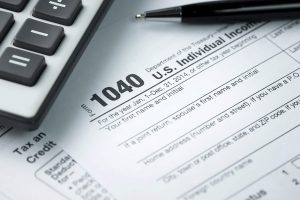
The Senate and House have passed similar tax reform plans, but the bill is not yet finalized. Legislators are still working to create a unified bill, and the real estate industry can expect significant changes under the “Tax Cuts and Jobs Act.” Key changes include:
Temporary 100% Bonus Depreciation
House Bill:
Modifies existing bonus depreciation rules under the “PATH Act” by increasing the rate to 100% through the end of 2022. It also makes bonus depreciation applicable to both new and used property, where it currently applies only to new property. The 100% bonus depreciation will not apply to real property trade or business (i.e., commercial and residential real estate).
Senate Bill:
Similar to the House bill, except the 100% bonus depreciation will apply only to new property and to real property trade or business.
Section 179 Expensing
House Bill:
The Section 179 expense limitations for 2018 will increase from $500,000 to $5 million while the phase-out limitations for assets placed in service will be increased from $2 million to $20 million.
Senate Bill:
The Section 179 expense limitations for 2018 will increase from $500,000 to $1 million while the phase-out limitations will increase from $2 million to $2.5 million. Qualified real property eligible for 179 expensing will be expanded to include improvements to certain buildings systems including roofs, HVAC, fire and alarm systems, and security systems.
Real Estate Recovery Periods
House Bill:
No changes to current depreciation recovery periods of 27.5 years for residential and 39 years for non-residential real property.
Senate Bill:
Nonresidential real and residential rental property depreciable lives would be shortened to 25 years.
Like-Kind (1031 Exchanges)
House bill:
1031 exchanges will continue for real property, but not for tangible personal property. CAUTION: The proposed rules will trigger 1245 recapture for tangible personal property.
Senate Bill:
Same as House bill.
An updated version of the Tax Cuts and Jobs Act must be approved by both the Senate and House before going to the president to be signed into law.
We’ve Got Your Back
At KRS, we’ve been tracking tax reform legislation closely and are ready to assist you in your tax planning and preparation when it is finally signed into law. Don’t lose sleep wondering what impact the tax changes will have on your real estate holdings. Contact me at 201.655.7411 or SFilip@krscpas.com.
Update: Tax reform has now been passed into law. Stay up-to-date on how it impacts real estate investors by checking out the New Tax Law Explained! For Real Estate Investors.







 A tax benefit of real estate investing is the tax shelter provided by depreciation. Depreciation is an IRS acknowledgment that assets deteriorate over time. The IRS provides specific depreciable lives for residential and commercial property of 27.5 and 39 years, respectively. Unlike other expenses, the depreciation deduction is a paper deduction. You do not have to spend money to be entitled to an annual deduction.
A tax benefit of real estate investing is the tax shelter provided by depreciation. Depreciation is an IRS acknowledgment that assets deteriorate over time. The IRS provides specific depreciable lives for residential and commercial property of 27.5 and 39 years, respectively. Unlike other expenses, the depreciation deduction is a paper deduction. You do not have to spend money to be entitled to an annual deduction.
